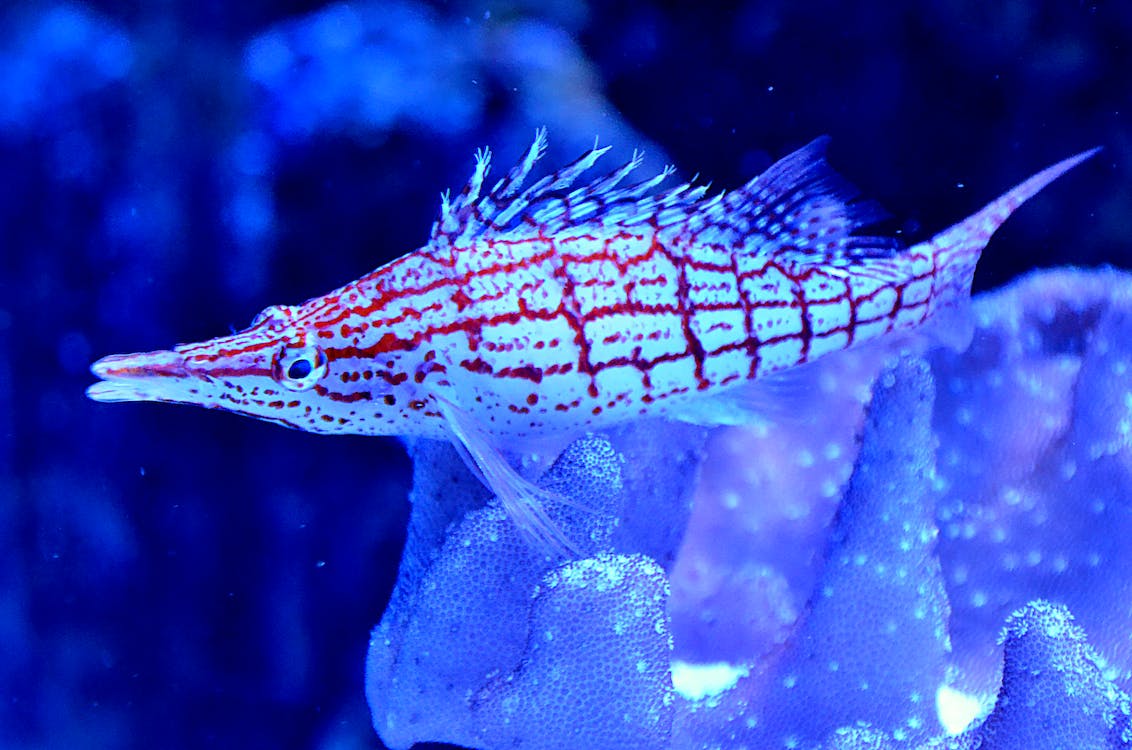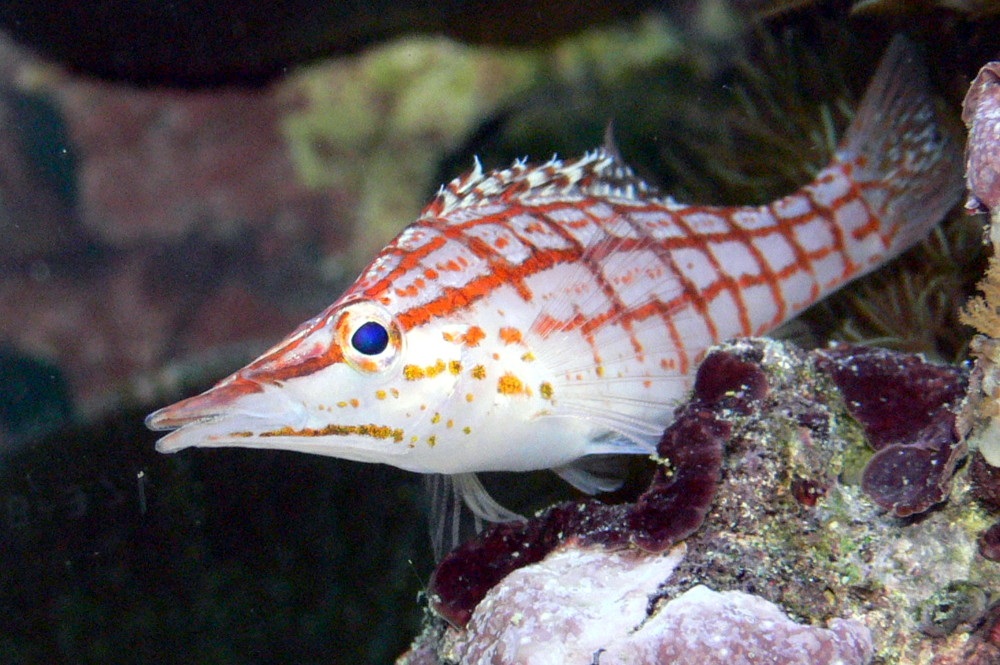Introducing the vibrant beauty of the sea, the Longnose Hawkfish. This fascinating creature resides in the tropical waters of the Atlantic and Indo-Pacific Oceans, gracing places such as the Red Sea, the Hawaiian Islands, Japan, and even the Gulf of California with its presence.
The Characteristic Lifestyle of the Longnose Hawkfish

Glimpsing this creature requires a dive down to depths ranging from 33 to over 60 feet. Endowed with a strong territorial instinct, the Longnose Hawkfish stakes out its home on rock edges and black coral, where they stand on guard and swoop down on unsuspecting prey, thus earning its ‘hawk’ moniker.
An Overview of Physical Features

A vivid combination of white and red encapsulates the Longnose Hawkfish’s body, forming a unique grid pattern. Its namesake long snout, characteristic of males in particular, accompanies this palette. The males of this species tend to be more colorful and larger, with some reaching over 5 inches in length.
Why is the Longnose Hawkfish so Popular?
The striking coloration, coupled with its intriguing behavior, renders the Longnose Hawkfish a favorite amongst sea life enthusiasts. Their resilience against many marine diseases and ability to acclimatize to aquarium settings further enhances their appeal. Plus, the relative ease of procuring them, combined with their affordability, draws in admirers.
The Ideal Aquarium for a Longnose Hawkfish

A minimum 35-gallon tank complete with ample rock and coral provides an ideal habitat for the Longnose Hawkfish. The water temperature should ideally hover between 75 to 79F. Considering the territorial nature of these creatures, a species-specific aquarium could be best.
- When hosting more than one pair of hawkfish, consider a larger tank.
- You can cohabit them with other fish but make sure to introduce these tank mates first.
- Ensure potential companions are sizeable enough to avoid becoming prey for the hawkfish.
- Stay away from stinging coral to prevent injury to your beloved fish.
Feeding and Breeding the Longnose Hawkfish

In captivity, the Longnose Hawkfish thrives on a diverse diet, alternating between both live and frozen food. While crustaceans often form most of their meals, small fish also offer a delectable treat for them. It’s best to offer them a balanced, varied diet.
Although the Longnose Hawkfish has been observed spawning in tanks, successfully raising hatchlings to maturity in an aquarium environment remains a rarity. Interestingly, these fish are protogynous synchronous hermaphrodites: they can transition from male to female. In a tank, they typically lay their eggs near the bottom, waiting for the miracle of life to unfold.
See Related: